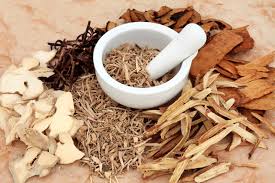GINSENG-ஒரு வகை மருந்து வேர்

Ginseng is found in eastern hardwood forests and takes a minimum of five years to reach maturity. The plant features pointed green leaves, light green flowers and red berries. Ginseng is the most widely used medicinal plant in the world, largely due to the fact that it is great for stimulating the immune system and increasing energy levels. It’s also been shown to lower blood sugar and cholesterol levels.

Feeling sluggish or tired lately? Need an energy boost? Then ginseng may be the answer to your problem. This herb is commonly used as an energy booster or to improve memory or concentration. Ginseng is a very popular herb and can also be used to treat a variety of health problems
Ginseng is a herb that has been used in the Asian culture for thousands of years. Americans have also been using it for quite some time - the Native Americans first used it to treat the wounded and exhausted. There are a few different types of ginseng, but only two that are considered to be the truest forms. The other forms are similar in nature to ginseng, like Siberian ginseng, but lack ginsenosides, the active ingredient in real ginseng.
 Ginseng has also been studied as a way to improve mood and boost endurance as well as treat cancer, heart disease, fatigue, erectile dysfunction, hepatitis C, high blood pressure, menopausal symptoms, and other conditions. While some of these uses are promising, the evidence isn’t conclusive.
Ginseng has also been studied as a way to improve mood and boost endurance as well as treat cancer, heart disease, fatigue, erectile dysfunction, hepatitis C, high blood pressure, menopausal symptoms, and other conditions. While some of these uses are promising, the evidence isn’t conclusive.
 Always buy ginseng from a well-respected company. Because it’s an expensive root, there is a risk that disreputable manufacturers might sell adulterated ginseng or include less than advertised on the bottle.
Always buy ginseng from a well-respected company. Because it’s an expensive root, there is a risk that disreputable manufacturers might sell adulterated ginseng or include less than advertised on the bottle.
Ginseng is any of eleven different species of short, slow growing perennial plants with fleshy roots. Ginseng is believed to restore and enhance normal well-being. Ginseng is one of the most popular herbal remedies in the world today.
The herbs consist of a light-colored, forked-shaped root, a relatively long stalk and green leaves with an oval shape.
Ginseng is believed by many people to restore and enhance normal well-being and has traditionally been taken to aid a number of medical conditions, which we discuss
Ginseng is found in eastern hardwood forests and takes a minimum of five years to reach maturity. The plant features pointed green leaves, light green flowers and red berries. Ginseng is the most widely used medicinal plant in the world, largely due to the fact that it is great for stimulating the immune system and increasing energy levels. It’s also been shown to lower blood sugar and cholesterol levels.
Feeling sluggish or tired lately? Need an energy boost? Then ginseng may be the answer to your problem. This herb is commonly used as an energy booster or to improve memory or concentration. Ginseng is a very popular herb and can also be used to treat a variety of health problems
Ginseng is a herb that has been used in the Asian culture for thousands of years. Americans have also been using it for quite some time - the Native Americans first used it to treat the wounded and exhausted. There are a few different types of ginseng, but only two that are considered to be the truest forms. The other forms are similar in nature to ginseng, like Siberian ginseng, but lack ginsenosides, the active ingredient in real ginseng.
Different varieties of ginseng root have been used as treatments in Asia and North America for centuries. Ginseng is one of the most popular herbal medicines in the world.
Why do people take ginseng?
Ginseng has traditionally been used for a number of medical conditions. However, only a fraction of them have been seriously researched.
There are two main types of ginseng: Asian or Korean ginseng (Panax ginseng) and American ginseng (Panax quinquefolius). Studies have found that the different types have different benefits. In traditional Chinese medicine, American ginseng is considered less stimulating than the Asian variety.
Although many other herbs are called ginseng -- like eleuthero, or Siberian ginseng -- they do not contain the active ingredient of ginsenosides.
Some studies have found that ginseng may boost the immune system. There is some evidence that one particular type of American ginseng extract might decrease the number and severity of colds in adults.
There is some early evidence that ginseng might temporarily -- and modestly -- improve concentration and learning. In some studies of mental performance, ginseng has been combined with ginkgo. While these studies are intriguing, many experts feel that we need more evidence.
How much ginseng should you take?
Standard doses of ginseng have not been established for any condition. Quality and active ingredients in supplements may vary widely from maker to maker. This makes it very hard to establish a standard dose.
Can you get ginseng naturally from foods?
There are no natural food sources of ginseng. Ginseng is sometimes added to energy drinks and foods.
What are the risks of taking ginseng?
- Side effects from ginseng are generally mild. Since ginseng can act as a stimulant in some people. Ginseng has been reported to cause nervousness and insomnia. Long-term use or high doses of ginseng may cause headaches, dizziness, stomach upset, and other symptoms. Women who use ginseng regularly may develop breast tenderness and menstrual changes. There have also been some reports of allergic reactions to ginseng.
- Interactions. Because ginseng may affect blood sugar levels, people taking drugs fordiabetes should not use ginseng without talking to their doctor first. Ginseng can interact with warfarin and with some medicines for depression. Do not take ginseng without consulting your doctor if you take any medications. Caffeine may amplify ginseng’s stimulant effects.
- Risks. To avoid side effects from ginseng, some experts suggest that ginseng shouldn’t be used for more than three months -- or sometimes just a few weeks -- at a time. After a break -- or “holiday” -- your doctor might recommend that you begin taking it again for another few weeks or months.
Given the lack of evidence about its safety, ginseng is not recommended for children or for women who are pregnant or breastfeeding.
See the links below for in-depth information on the two main types of ginseng: American ginseng and Asian or Korean ginseng.